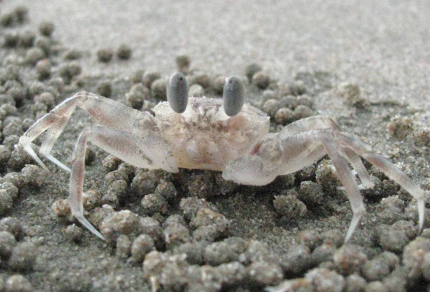
Soldier Crab Sand Balls at Nina Bay (© Vilis Nams)
While exploring Hinchinbrook Island’s east coast beaches during our backpacking adventure on the Thorsborne Trail, Vilis and I were fascinated by intriguing collections of small balls arranged in fetching designs on the sand. The balls typically radiated outward from a hole in the sand. Some of the holes were less than a centimetre in diameter, while others were a couple of centimetres across. Frequently, we startled tiny, nearly transparent crabs into motion, some of which ducked into the holes, and others of which scooted sideways across the sand to another hole or toward the ocean’s incoming waves. These crabs, we learned from our trail guide information, were blue soldier crabs belonging to the genus Mictyris. We puzzled at the sand balls, and I wondered if they formed a camouflage for the crabs, which were next to invisible when positioned among them.
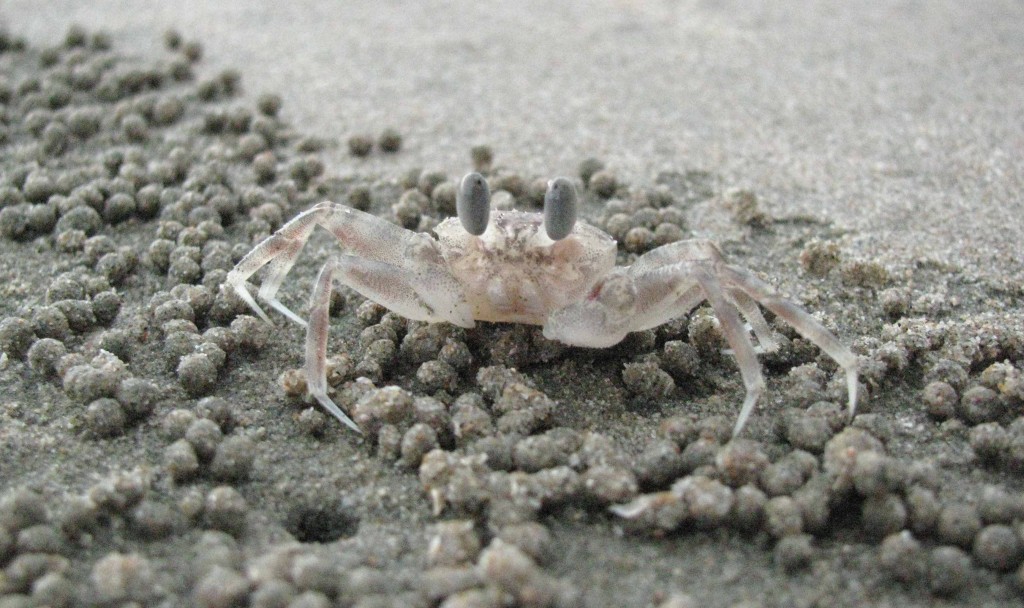
Soldier Crab and Sand Balls, Nina Bay (© Vilis Nams)
After returning to Townsville, I did a little research and discovered that blue soldier crabs are residents of sandy beaches from Singapore to the east and west coasts of Australia.1 Growing to about an inch across as adults, they spend most of their time buried in sand, but emerge a few hours before low tide to feed.1
After appearing on the beach surface, foraging soldier crabs move as a line onto exposed, moist sand.1 They scoop up sand, from which they glean detritus and small living organisms like diatoms, round worms, and snail eggs.1 Waste sand from their feeding collects and rolls off the crabs as round pellets1, thus creating the inadvertently artistic arrangements Vilis and I observed. Male blue soldier crabs frequently form ‘armies’ of up to hundreds of individuals that move as one across beaches.1 Eventually, feeding or congregating crabs leave the drying sand, move up the beach as individuals, and corkscrew themselves down into the sand to await the next low tide.1 When soldier crabs on the surface are disturbed, they rapidly dig themselves into the sand2 or dive into a nearby handy hole. They also do their best to evade the beaks of predatory birds such as the straw-necked ibis, collared or mangrove kingfisher,1 and as we observed, the beach stone-curlew.
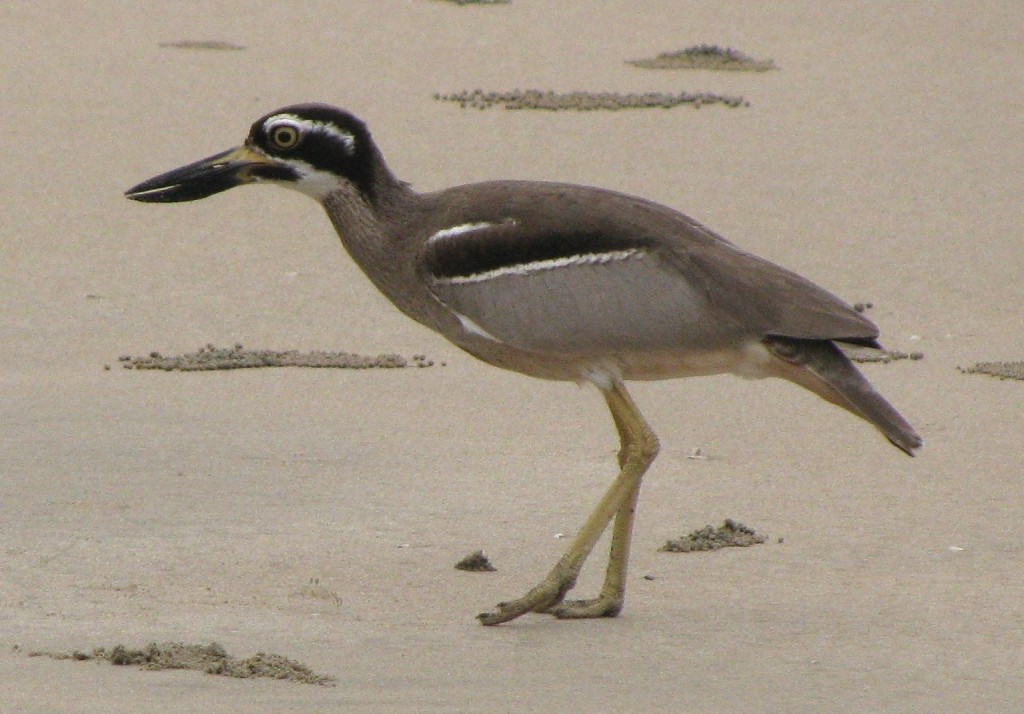
Beach Stone-curlew at Nina Bay (© Magi Nams)
Beach stone-curlews are large, heavy-set waders with massive, pointed beaks and surprisingly small and agile feet. They occur around the north coast of Australia from cental Western Australia to northern New South Wales, and may be observed on undisturbed beaches, coral reefs, sandflats or mudflats, and at tidal river mouths and coastal lagoons.3 They hunt for crabs and other invertebrates on mudflats and sandy habitats exposed by low tides.3
At both Zoe and Nina Bays on Hinchinbrook Island, a single beach stone-curlew simply appeared on the beach late in the afternoon or at dusk. Likely, each had spent the day resting in the shelter of dense beach-edge vegetation consisting of mangroves or she-oaks and coconut palms. When on the beach, each stone-curlew walked slowly, scanning its surroundings. Periodically, both broke into rapid, directed movement, their legs flashing and nimble feet racing. Vilis and I soon perceived that these dashes were hunting chases, with the stone-curlews hot in pursuit of soldier crabs. Sometimes the life-and-death race went to the crabs, which escaped into holes before being snatched up, but often the stone-curlews were the victors, seizing their prey with quick stabs of their chisel-like beaks. One larger crab zigged and zagged, leading a curlew in tortuous pursuit, but eventually it, too, met its demise. Set against the exotic backdrop of green ocean, warm sand, and lush vegetation, the primal predator-prey interaction of soldier crab versus beach stone-curlew presented a striking tableau of tropical nature at work right before our eyes.
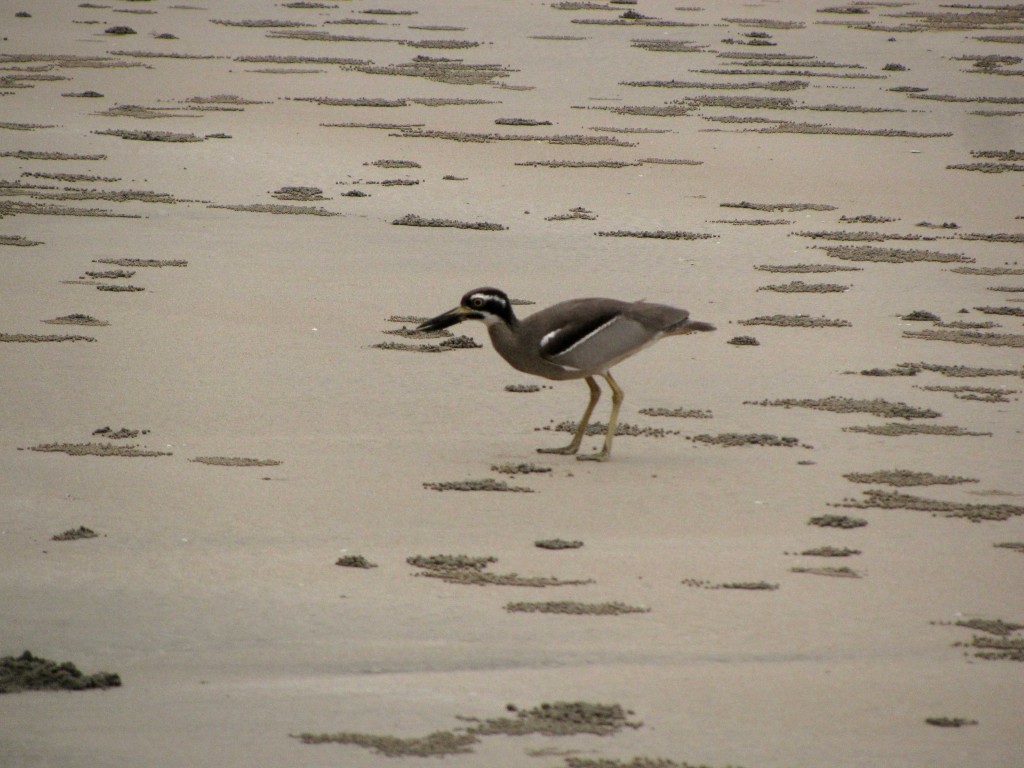
Beach Stone-curlew Crab-hunting at Nina Bay (© Magi Nams)
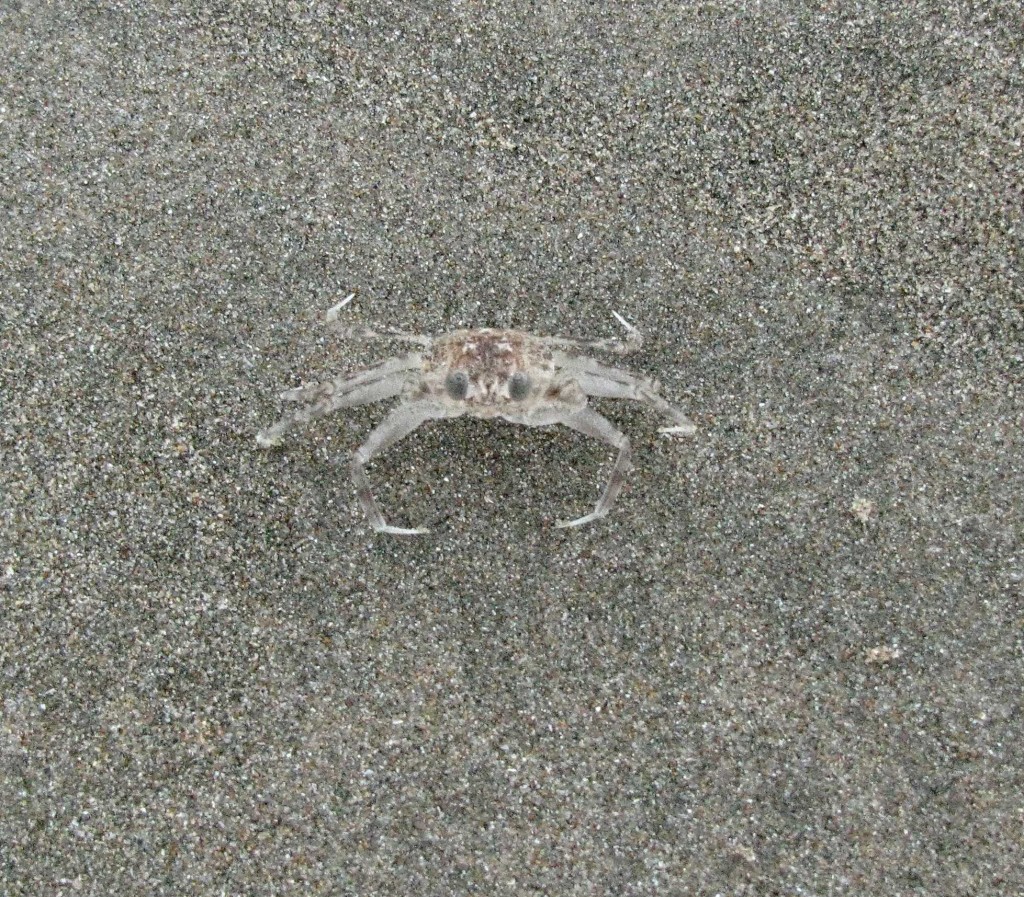
Soldier Crab, Nina Bay (© Vilis Nams)
References:
1. Wikipedia. Mictyris longicarpus. Updated 12-Jun-2010. Accessed 20-Sep-2010. http://en.wikipedia.org/wiki/Mictyris_longicarpus (All information cited from the source: Ann M. Cameron. 1966. Some aspects of the behaviour of the soldier crab, Mictyris longicarpus. Pacific Science 20(2): 224-234.)
2. Marine Education Society of Australasia. Challenging Habitats: Southern Saltmarshes and Mangroves: 2. Key Species – Animals: Soldier Crab (Myctyrus platycheles). © MESA 1999-2010. Accessed 20-Sep-2010. http://www.mesa.edu.au/habitat/chall03.asp
3. Birds Australia. Birds in Backyards: Beach Stone-curlew. © 2010. Updated 11-Aug-2006. Accessed 20-Sep-2010. http://birdsinbackyards.net/species/Esacus-neglectus

